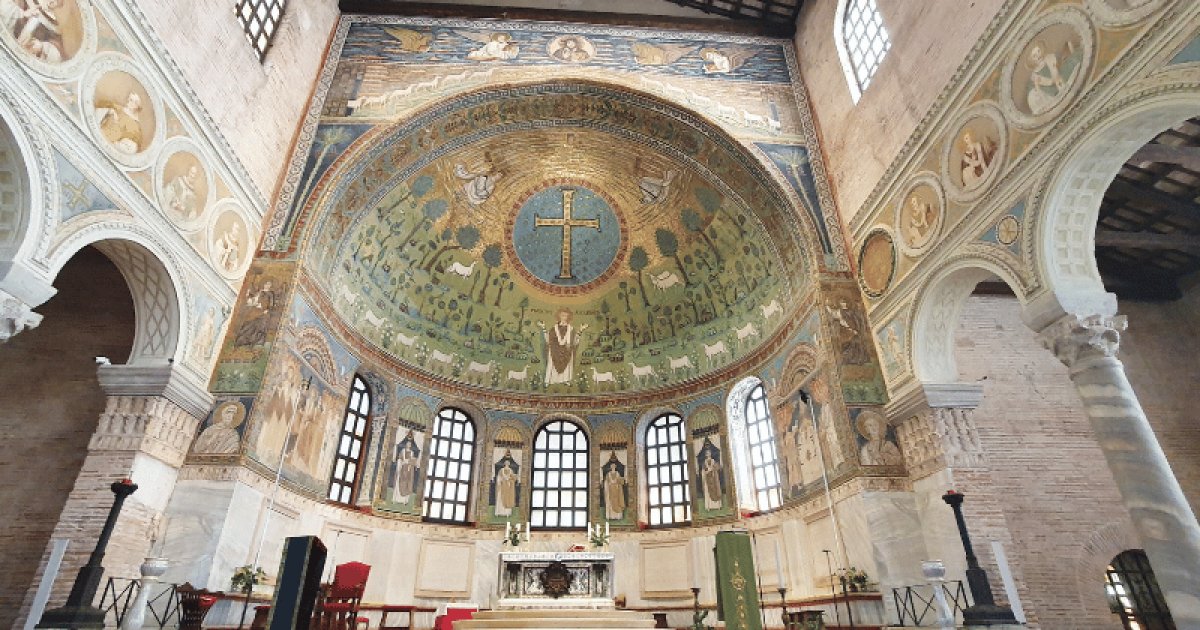BASILICA OF SANT'APOLLINARE IN CLASSE, Interior
 Language: English / USA
Language: English / USA
The interior of the Basilica is really large, with three naves, some as long as 55 meters – or 180 feet – and as high as 30 meters or 100 feet.
The aisles are delineated by two colonnades of 12 columns each, made of splendid marble from Byzantine quarries. Each rests on a prominent parallelepiped base and is decorated at the top with capitals carved with acanthus leaf motifs.
On either side of the nave, above the arches, are 18th-century frescoes depicting archbishops of Ravenna.
Now head to the apse, where the best-preserved mosaic decoration stands out, whose color, predominantly gold and green, will have already caught your attention.
Toward the center of the nave, you find a light-colored marble altar that a legend says was built to hold the remains of St. Apollinaris. It is also said that while praying at this altar, St. Romuald of Camaldolese had a vision of the saint twice.
Now press pause and press play again when you are closer to the apse.
Begin by observing, starting at the bottom, the arch in front of the apse. On either side you see two saints, Luke and Matthew. Immediately above are the two archangels Gabriel and Michael, then a procession consisting of twelve sheep, six on each side, who are leaving the cities of Bethlehem and Jerusalem on their way to Christ Blessing, portrayed in the central roundel, above, with the symbols of the four Evangelists on either side.
Now shift your gaze to the vault of the apse. A blue roundel stands out in the center, studded with 99 gold and silver stars, with a cross studded with precious stones in the middle. If you look closely at the latter you will notice, at the intersection of the two arms, the face of Christ. The scene refers to the Transfiguration of Christ on Mount Tabor. Notice, in fact, on either side of the tondo, the half busts of the prophets Elijah and Moses and above that the hand of God pointing to his son through the clouds.
The lower scene, with St. Apollinaris in the center surrounded by sheep representing the faithful, is set in a beautiful garden. Look at the three sheep found above, separated from the others. They also refer to the Transfiguration, representing the apostles Peter, James and John who witnessed the event.
The four figures portrayed on the sides of the large windows below are Bishops Ursicinus, Ursus, Severus, and Ecclesius. At the ends of this band, you can see the Byzantine Emperor Constantine IV on the left granting certain privileges to the Church of Ravenna; while on the opposite side sacrifices of biblical characters from the Old Testament are depicted.
An interesting fact: St. Apollinaris' robe is dotted with golden bees, in reference to the church seen as a beehive where the bees represent the faithful.



